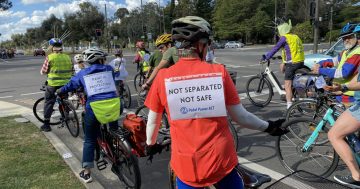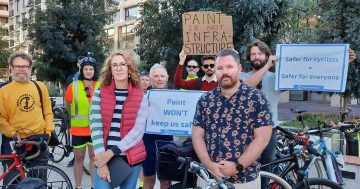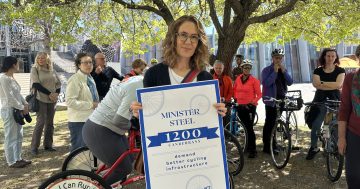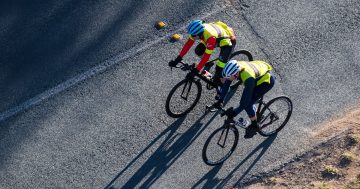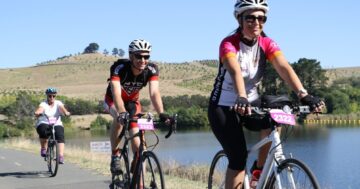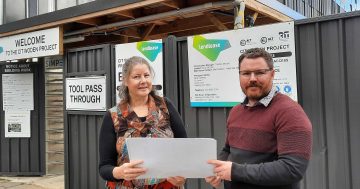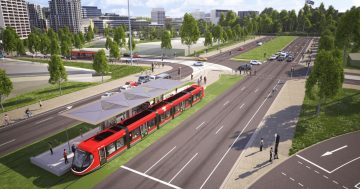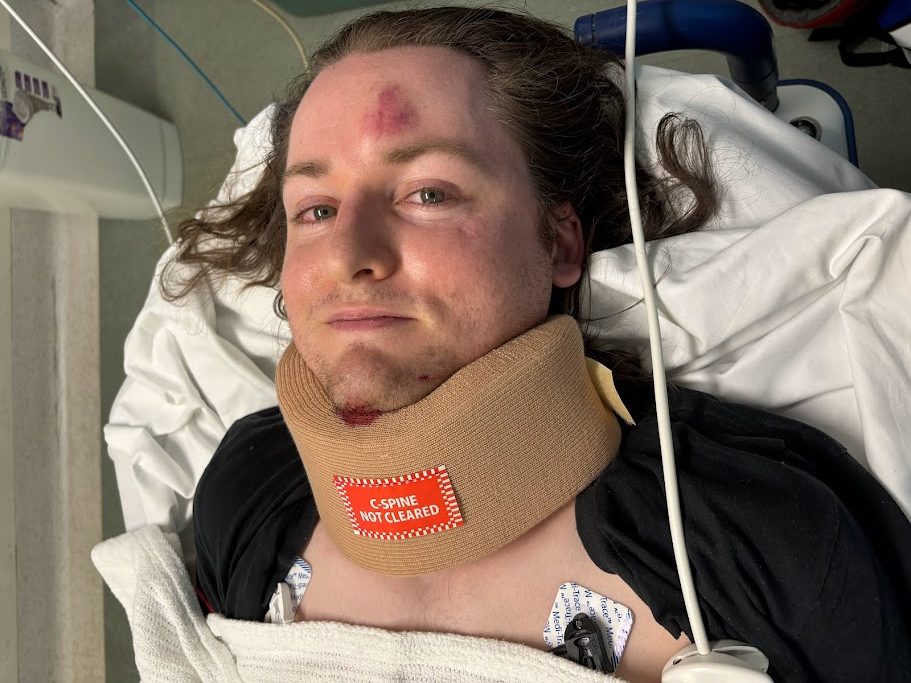
Jon Harriman was taken to the emergency department with minor injuries, but it could have been a lot worse. Photo: Jon Harriman.
Jon Harriman has taken the same cycling route for years – 6 km along Canberra Avenue and onto Empire Circuit from Red Hill.
Friday, 15 December, ended differently, however.
“I was coming home from work, down Empire Circuit and had just come up to the stop sign on Canberra Avenue when I saw two cars crash into each other,” the young architecture graduate said.
“I have a memory of one of the cars coming at me, and that’s all. I came to on the ground.”
He was rushed to the emergency department, where it was discovered he had come off fairly lightly (“all things considered”) without any broken bones but with a “pretty good bump to the head”, a sore and swollen knee and one finger in need of surgery.
“But I just know with the tiniest change in circumstances, it could have been fatal.”
The incident occurred a matter of days after the Australian Government-funded website BikeSpot revealed the worst roads for cyclists in the ACT, with the scene of Jon’s accident among the roads labelled “unsafe”.

The BikeSpot map lists Canberra Avenue as an ‘unsafe spot’. Photo: Jon Harriman.
The crowdsourced map has been collecting input since October and contains about 1000 entries from Canberrans.
Northbourne Avenue ranks as the most unsafe road for its absence of separate cycle lanes, busy intersections, and risk of car dooring, followed by Fairbairn Avenue, Adelaide Avenue, Canberra Avenue and Eastlake Parade for the same reasons.
Jon says the cycling infrastructure along these roads is “completely inadequate” for the amount of traffic they bear.
“It’s just a little bit of paint on the side of the road, but no physical separation, which means we get caught up in these silly things,” he said.
“It’s not about educating drivers anymore because drivers will always make mistakes.”
The ACT Government released a draft ‘Active Travel Plan’ in 2022, which outlines plans to separate cyclists from motorists through the use of concrete blocks or “quick-build” options such as plastic barriers or posts. There’s also a list of proposed new cycling connections, including one along Jon’s route on Empire Circuit.
While it’s moving in the right direction, the document is too “big and lofty”, according to lobby group Pedal Power ACT.
“If that link had been constructed, Jon would have been safe,” executive director Simon Copland said.
He says both the BikeSpot map and Jon’s accident are the reasons they continue to advocate for safer cycling.
“The government has this plan, but it doesn’t actually tell us when things are going to be built or how they’re going to be built. It could be 10 years down the track, it could be 30 years down the track – we have no idea. And in the meantime, people like Jon are getting hit by cars.”
For now, the biggest struggle for Jon is building the confidence to get back on the bike.
“I’ve had to come in and out of hospital for appointments since I left the ED and I’ve found it quite hard to ride on the road,” he said.
“Had a bit of a panic attack yesterday – bit of a breakdown – I’m keen to try and work through that and get back on the bike. A different bike, obviously.”












